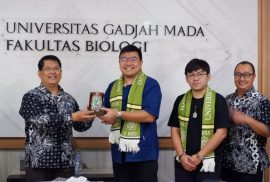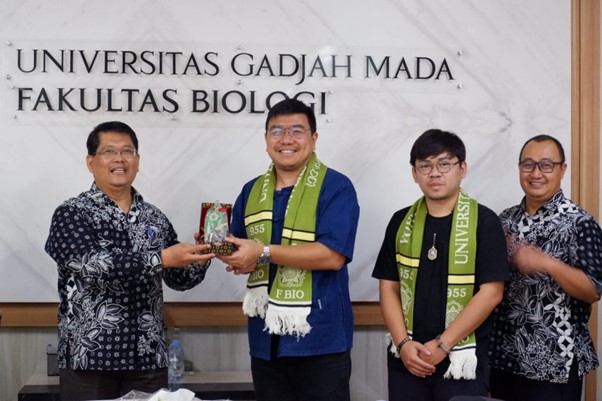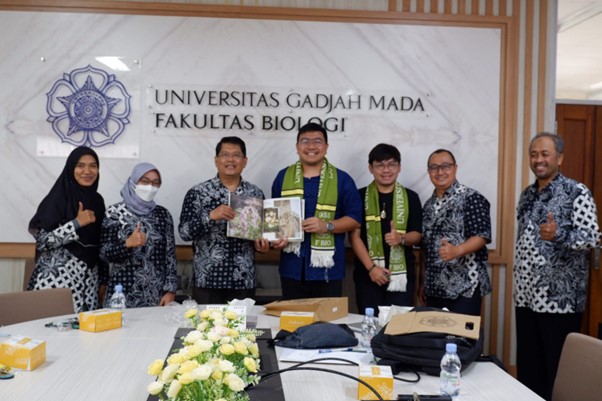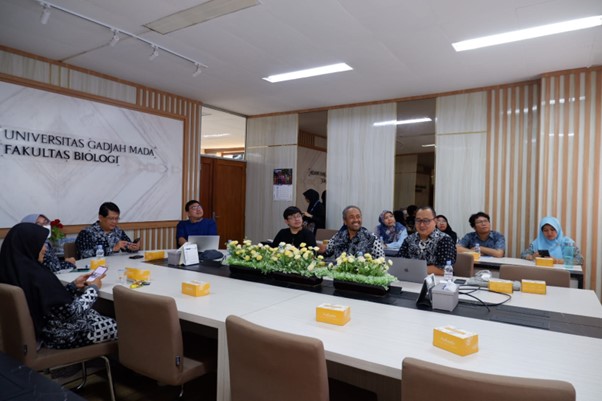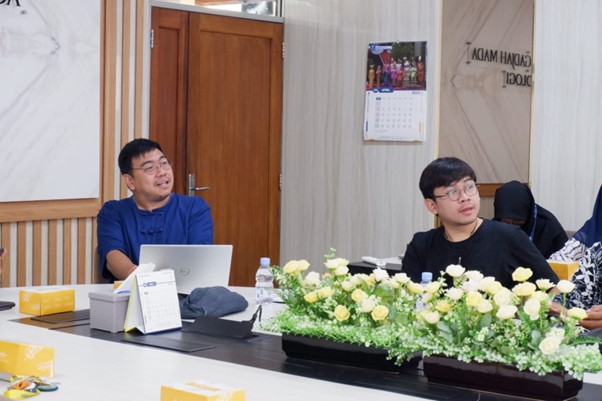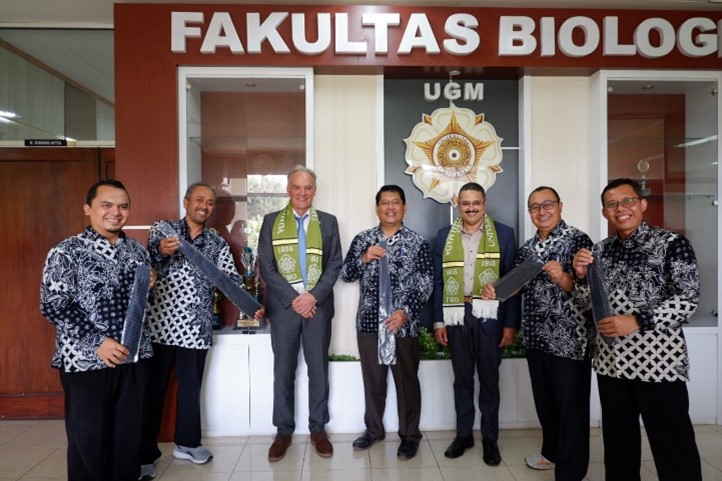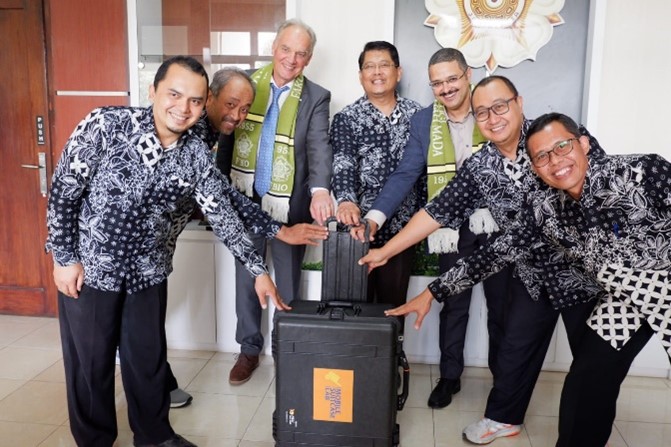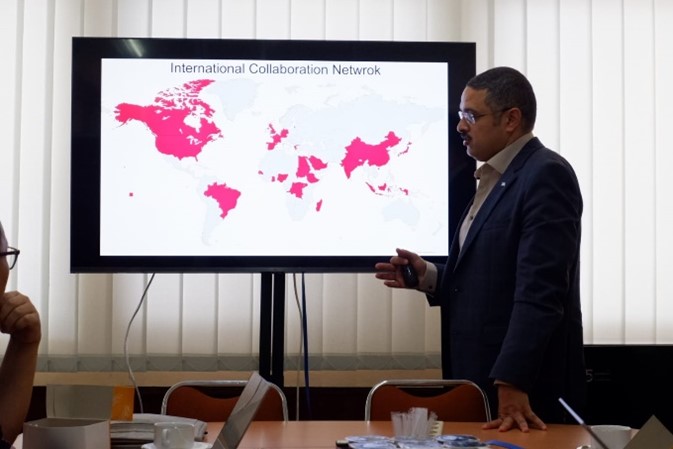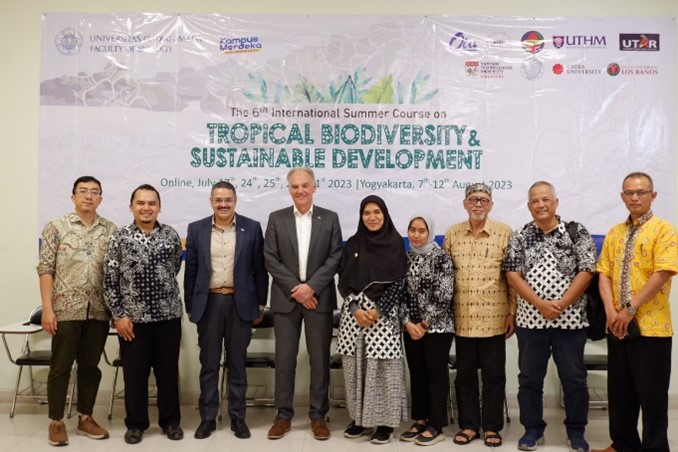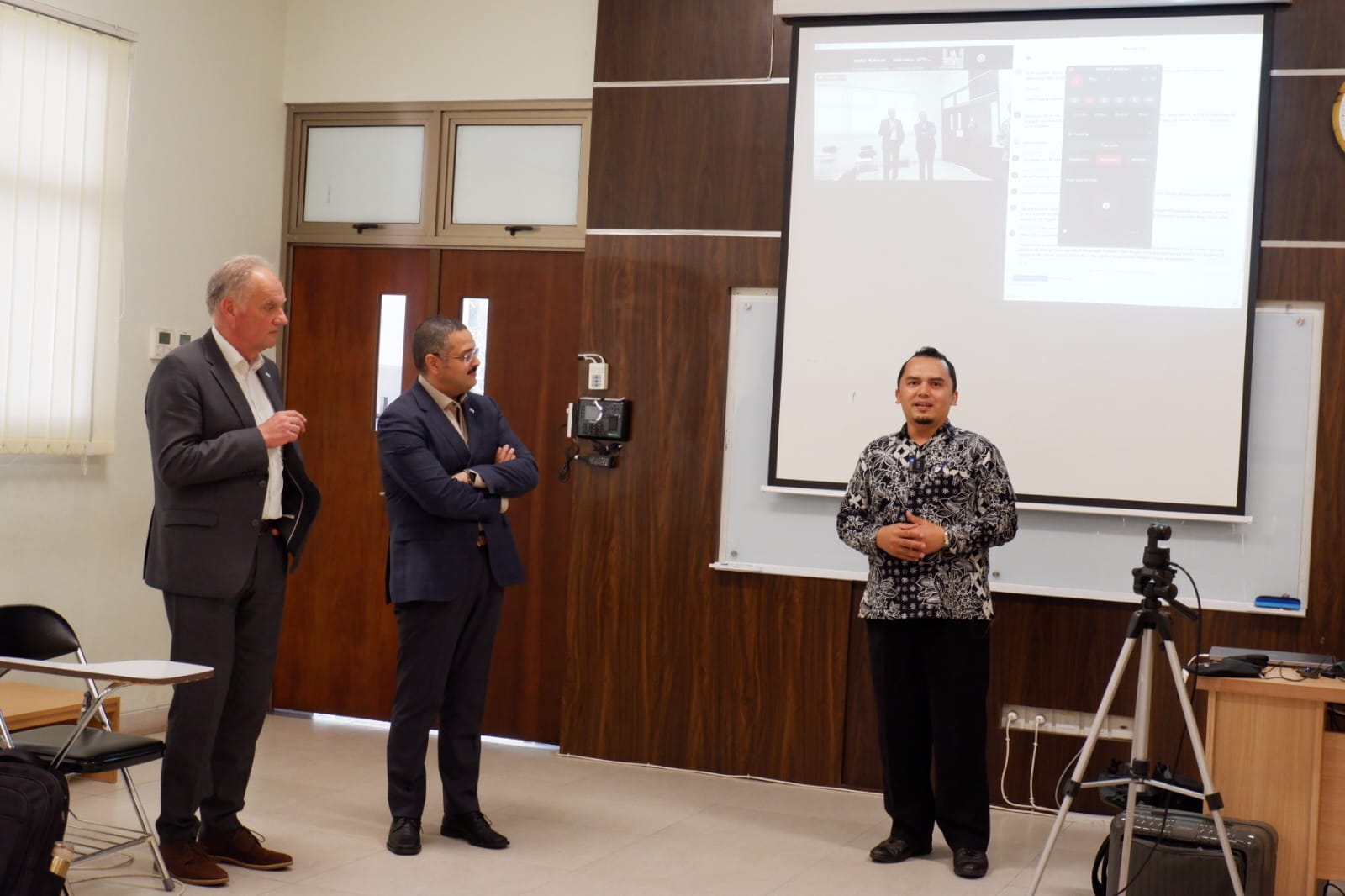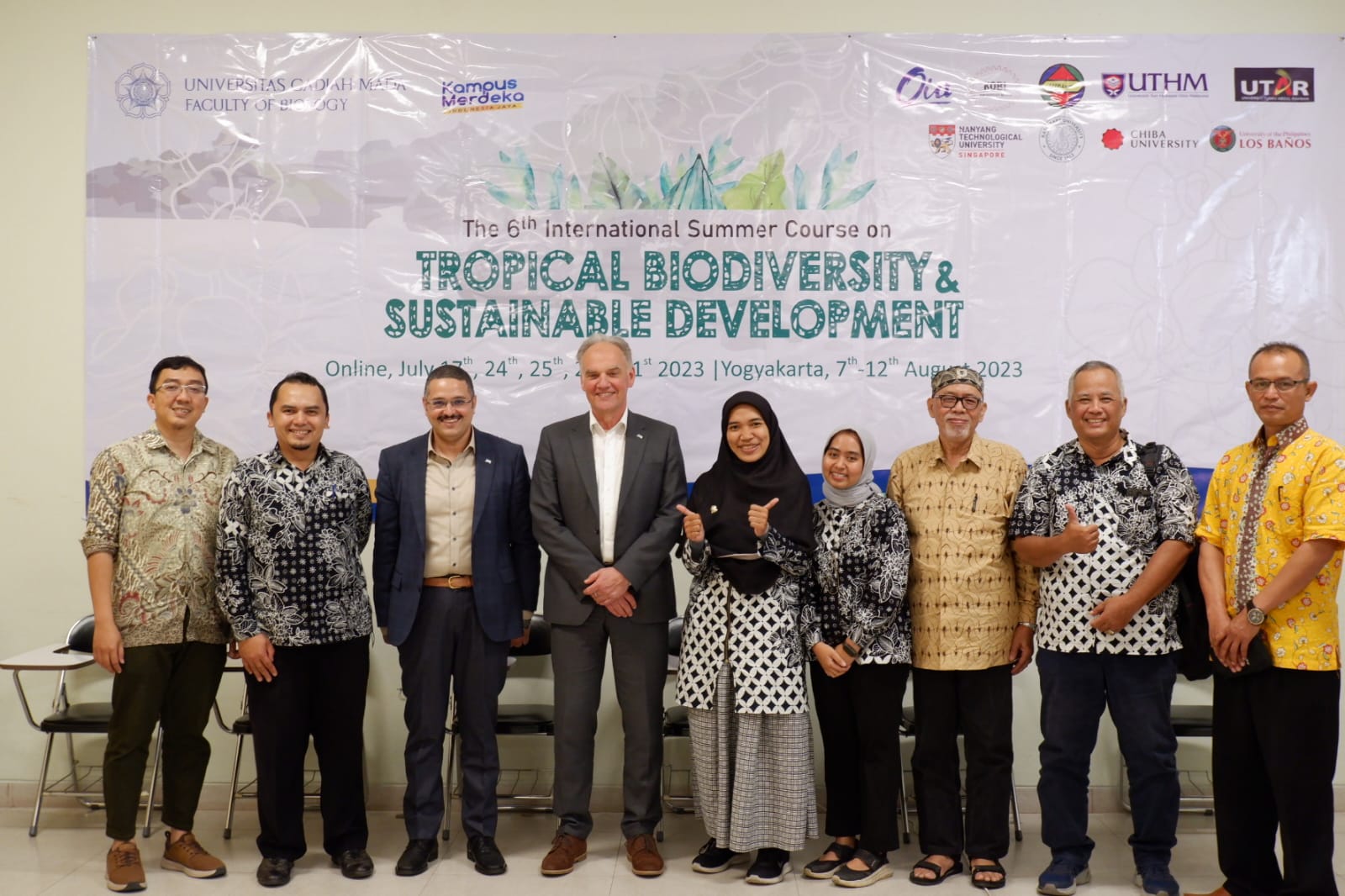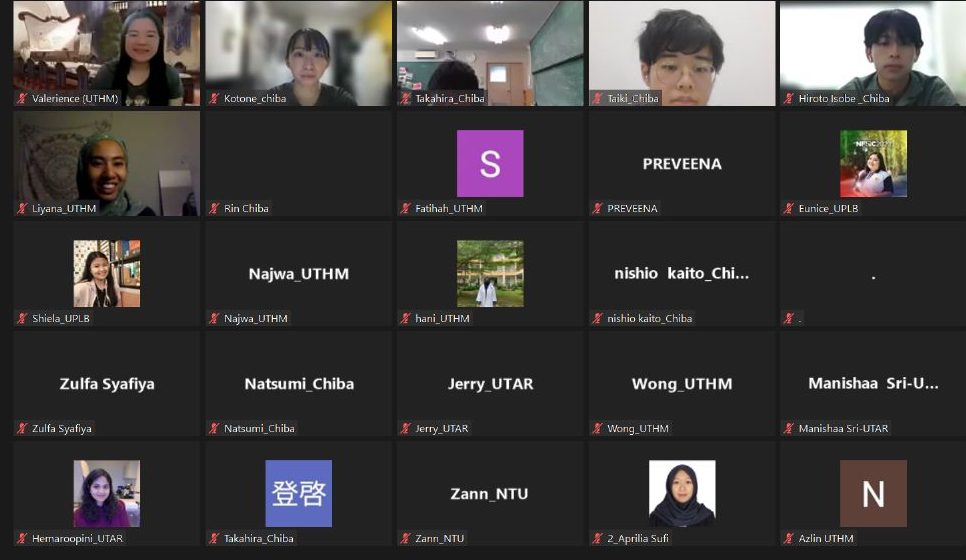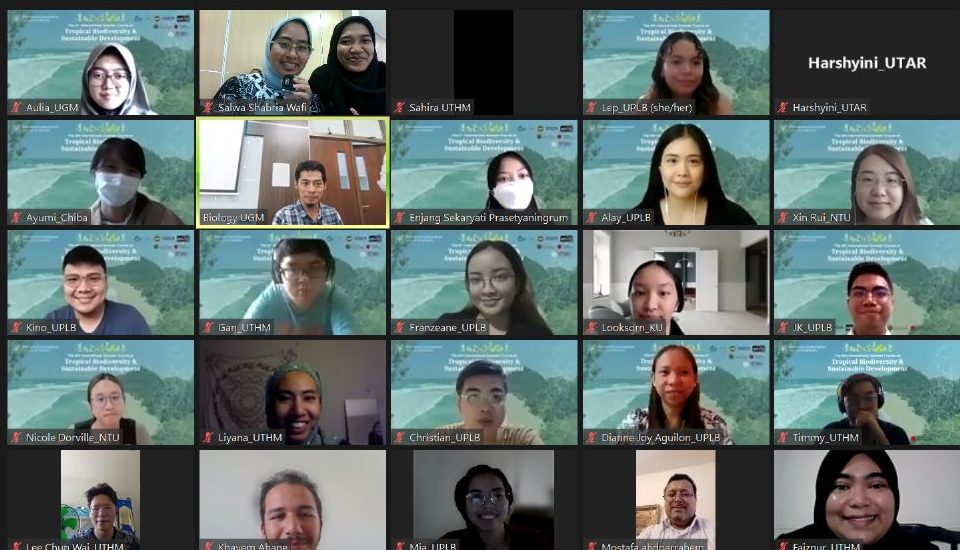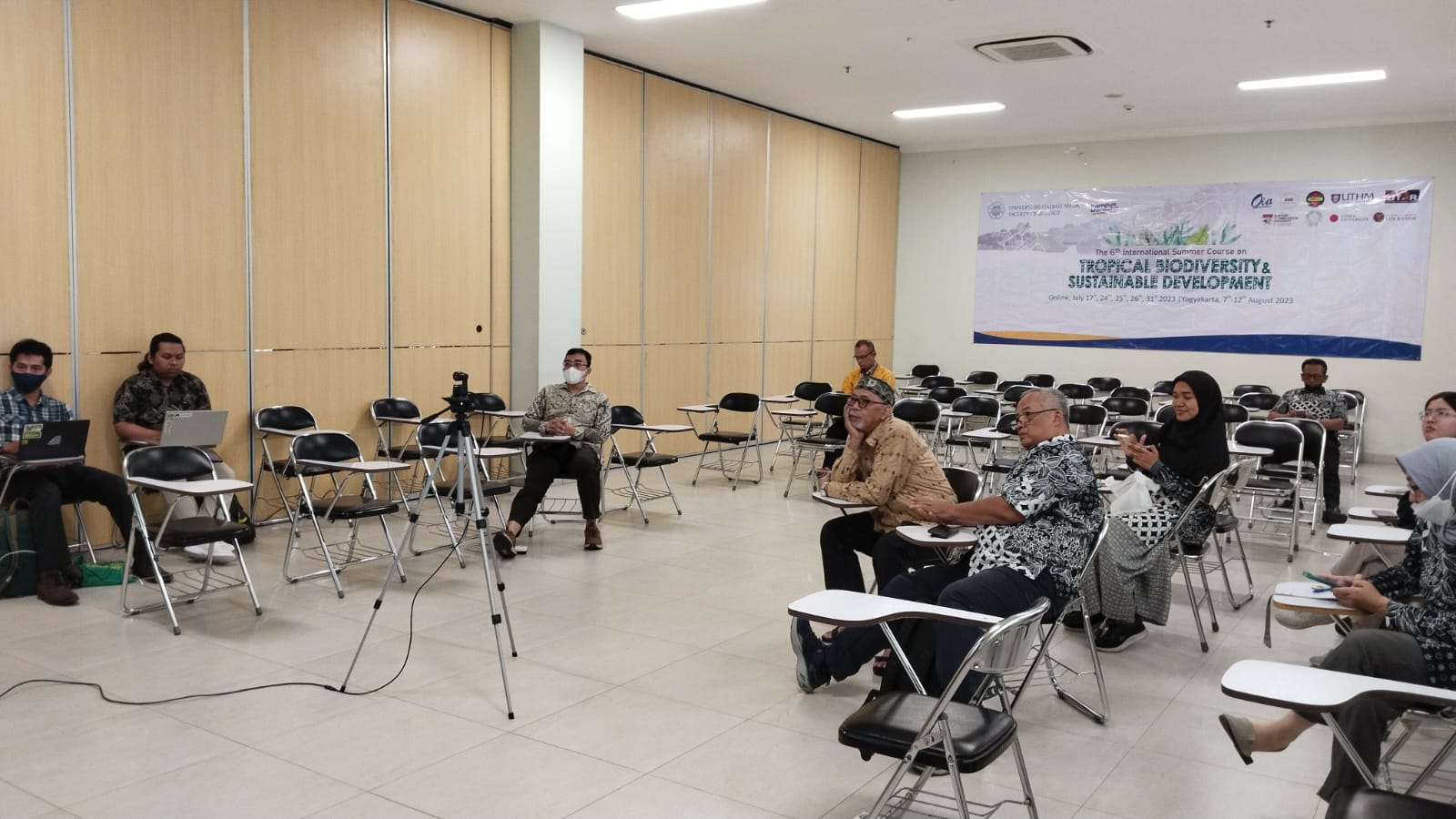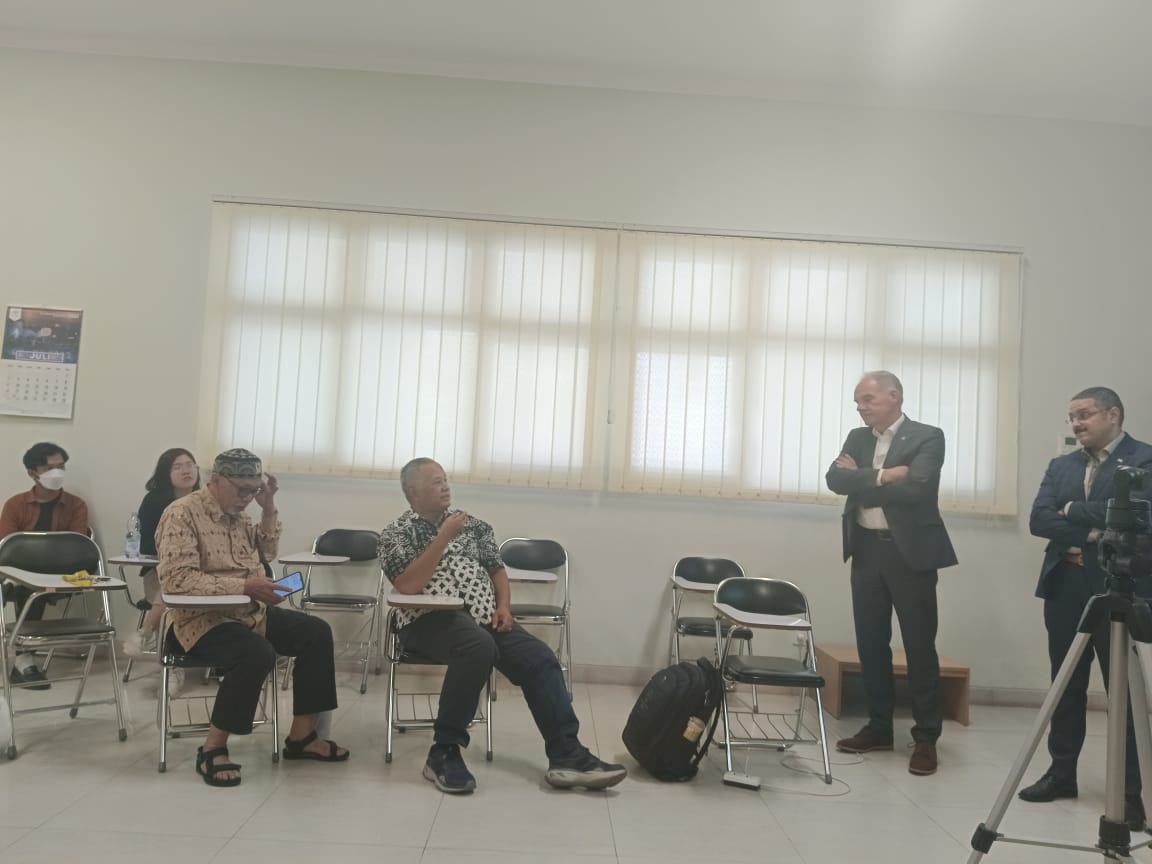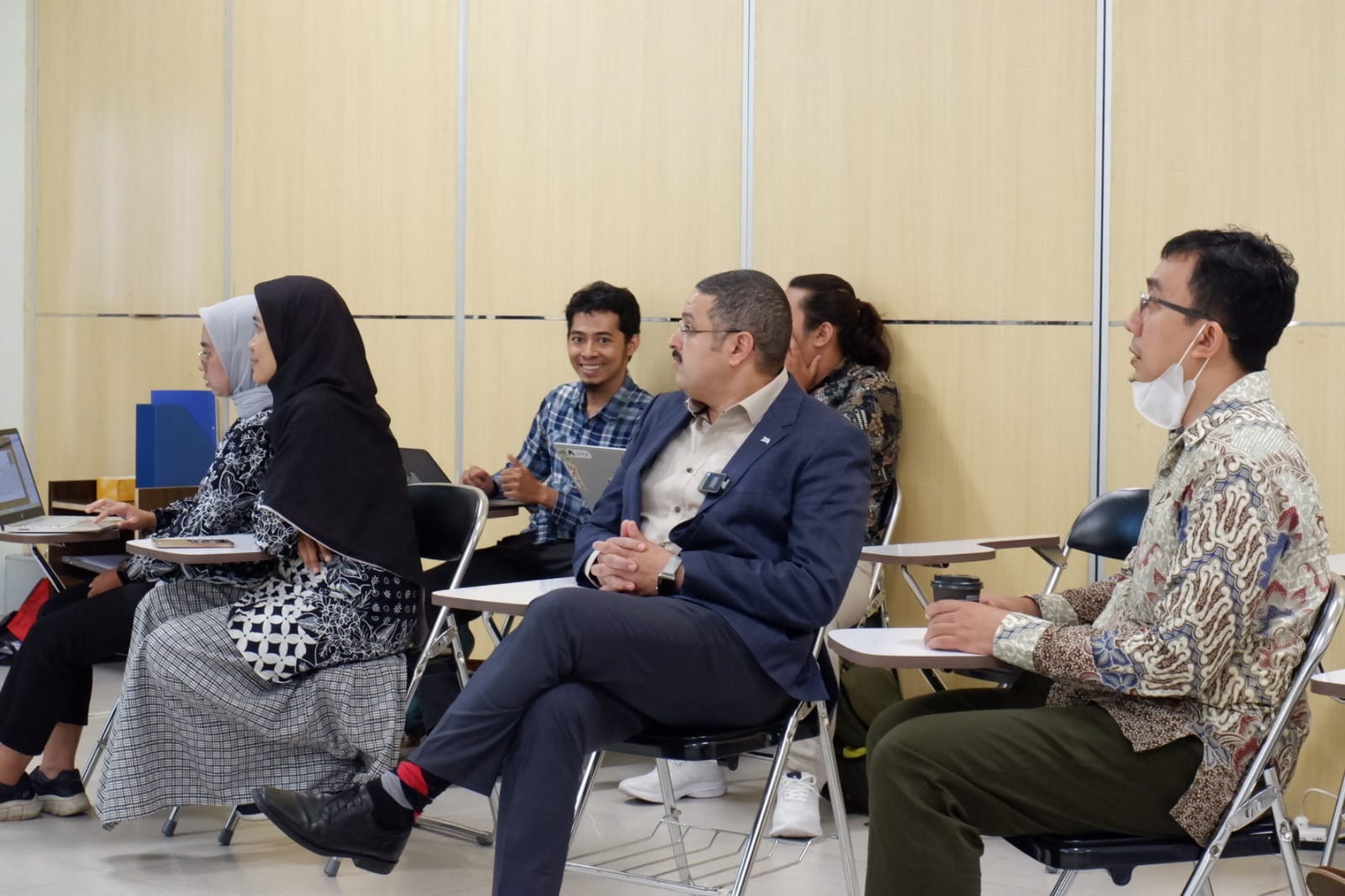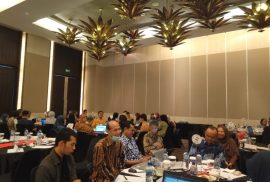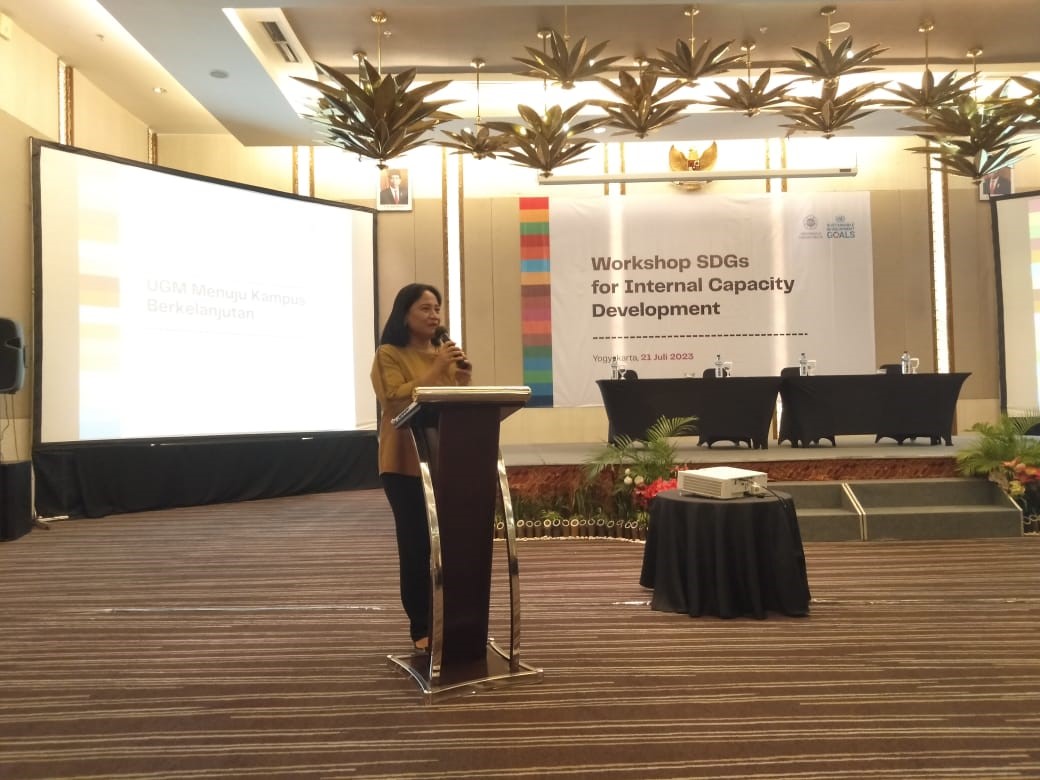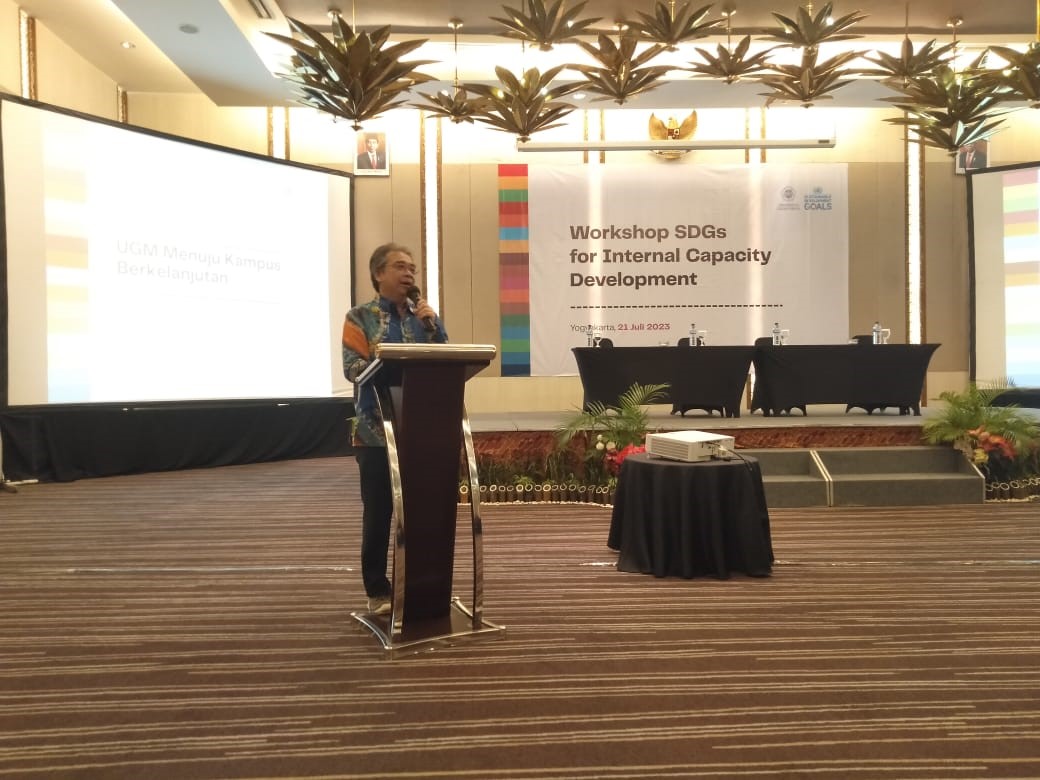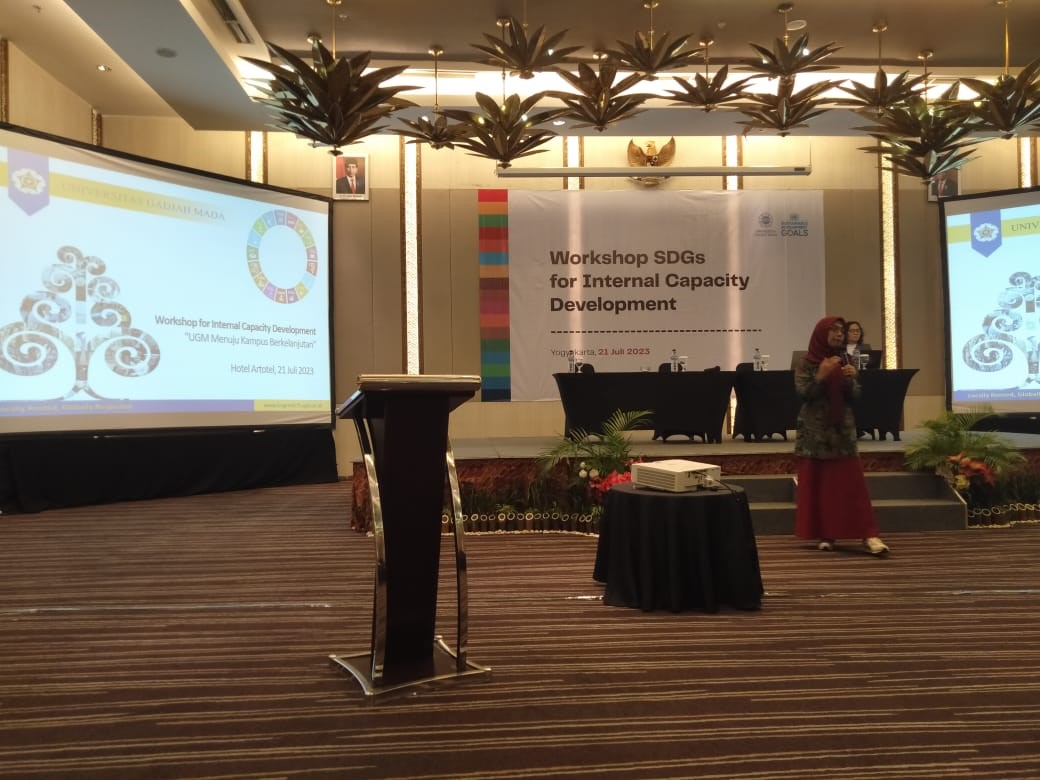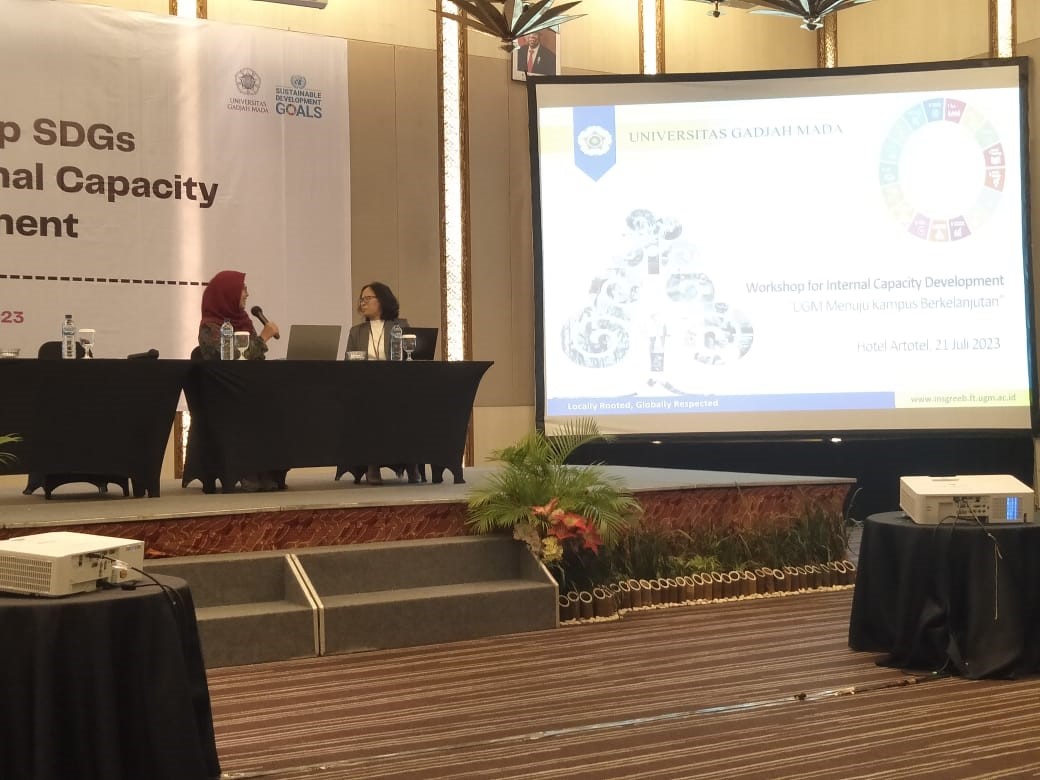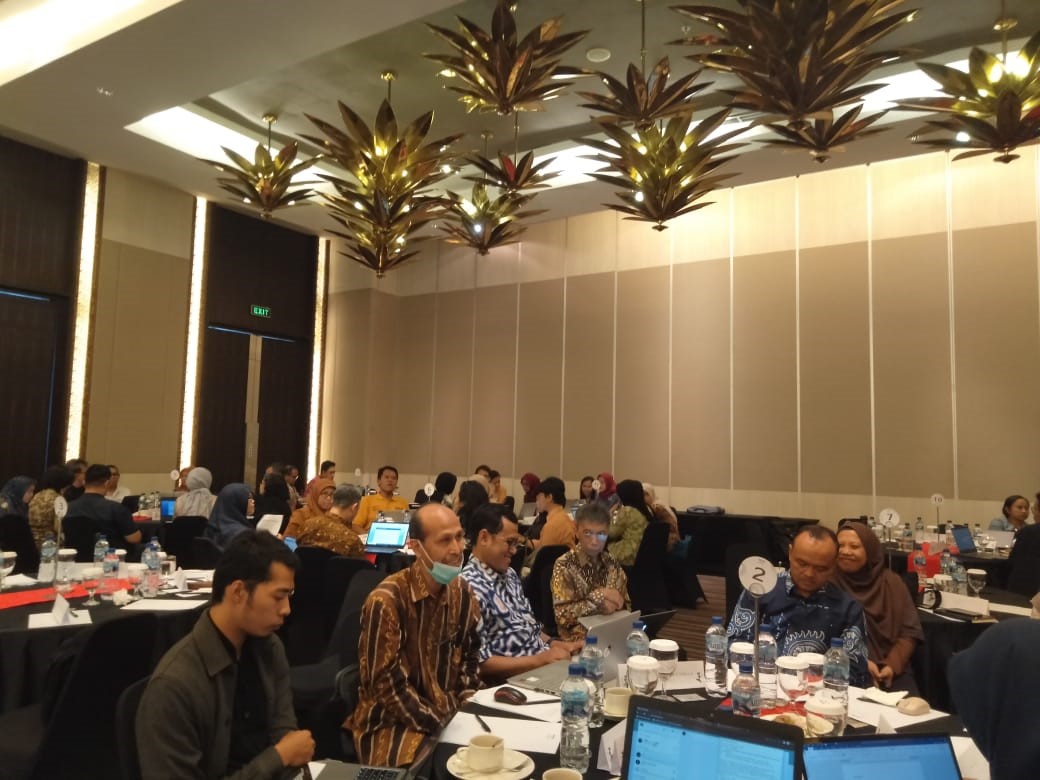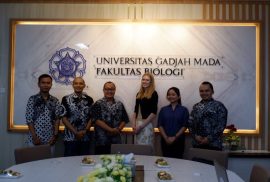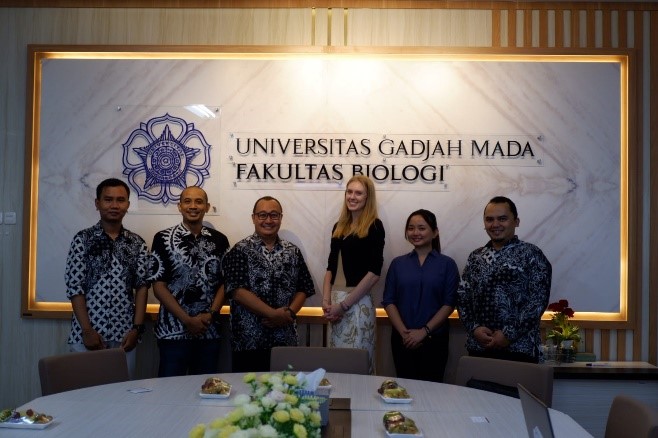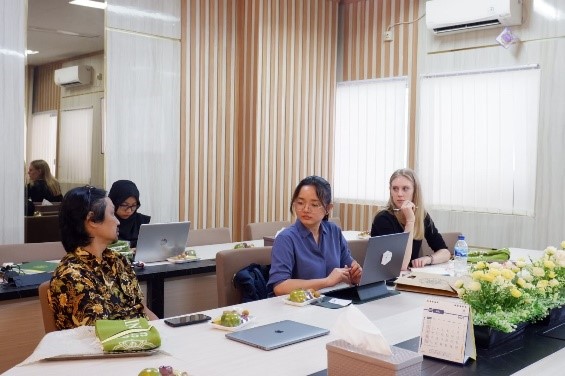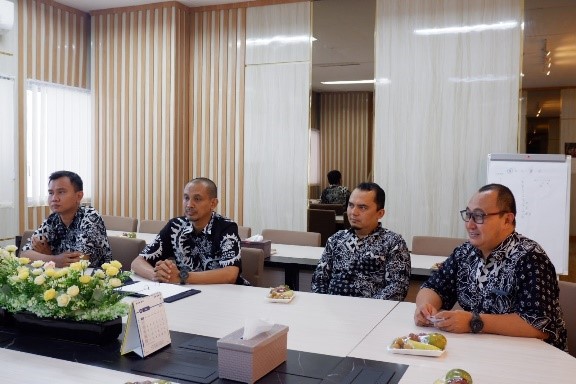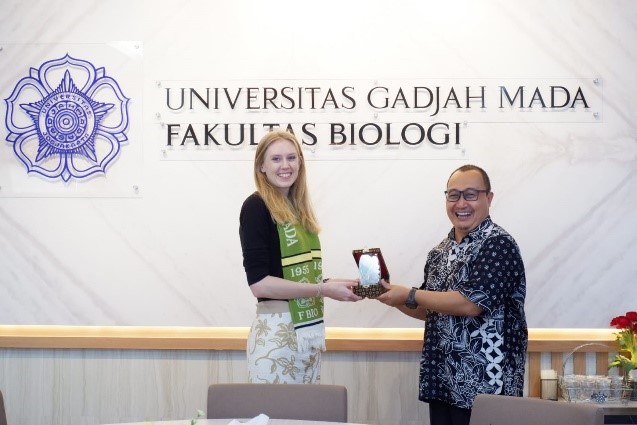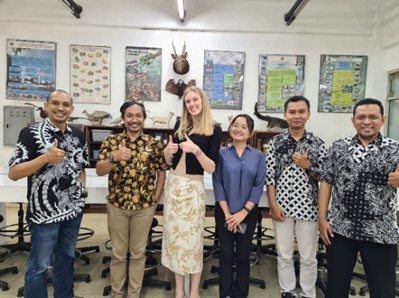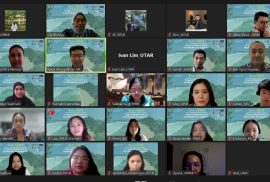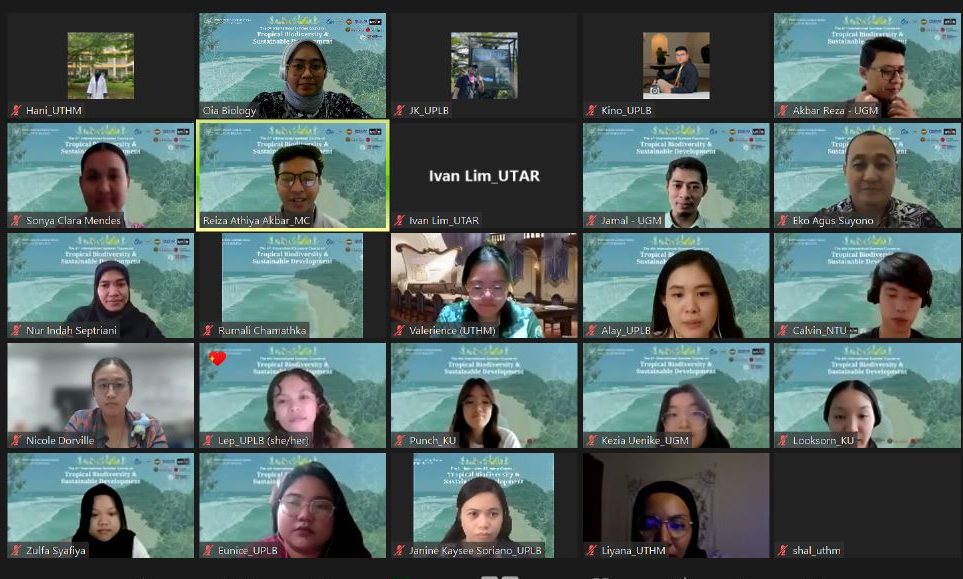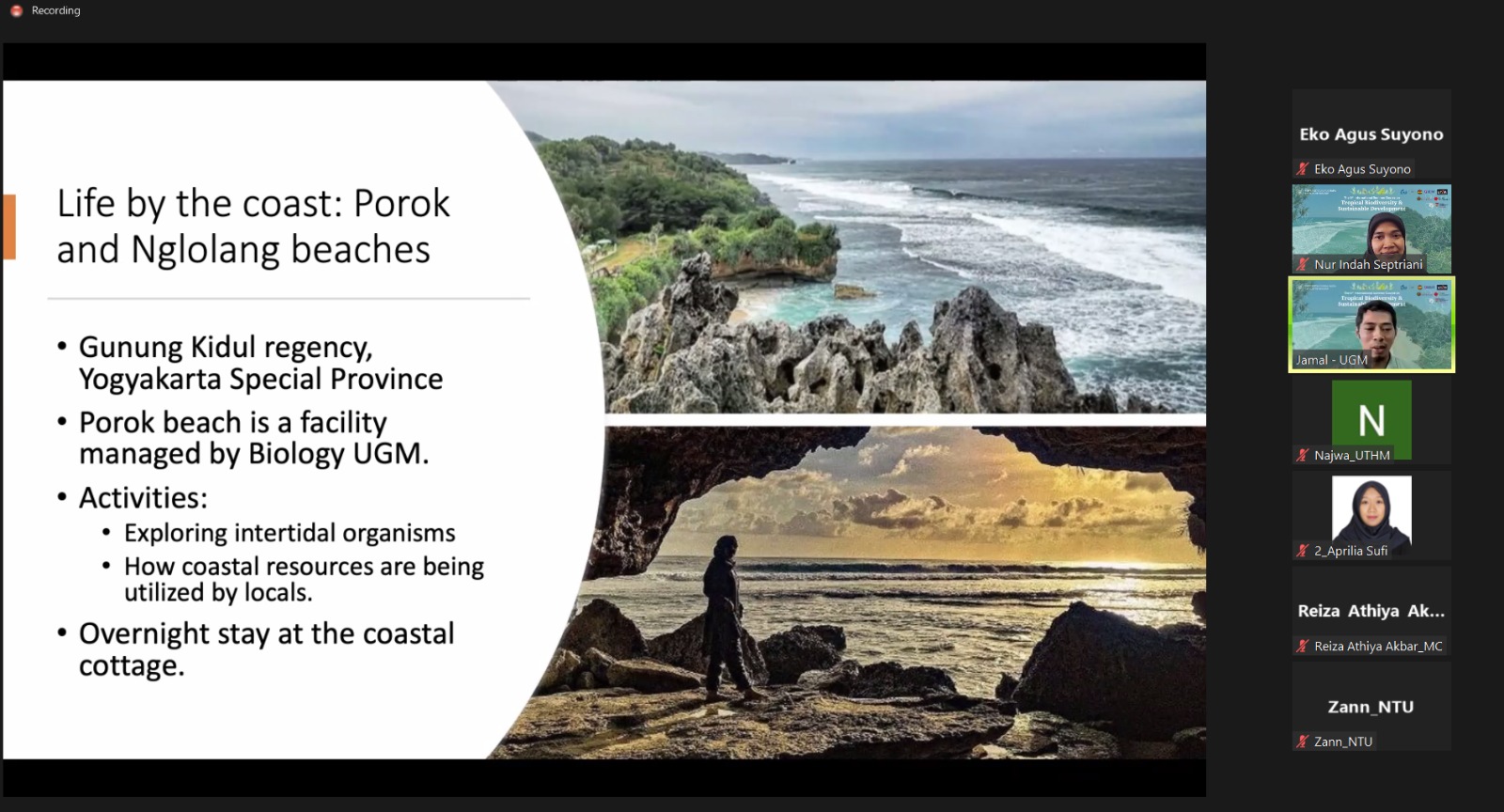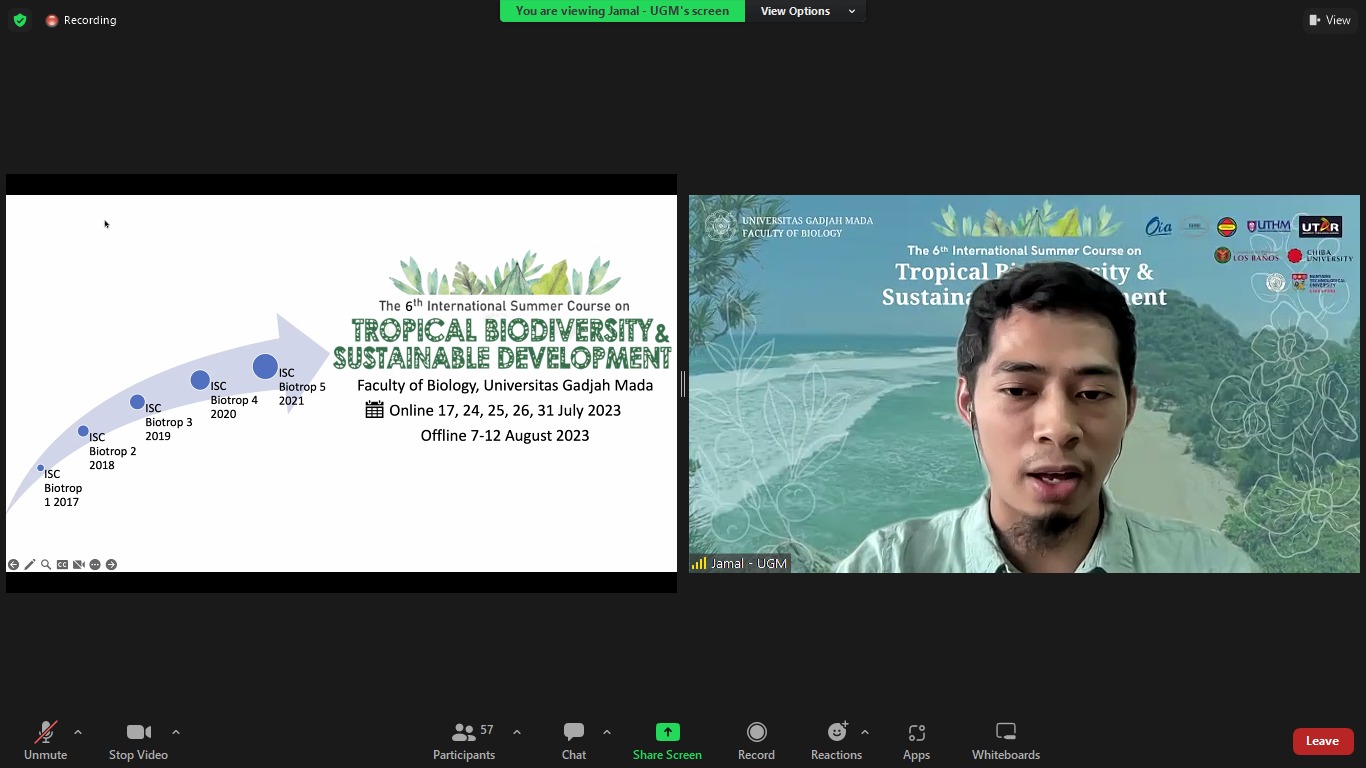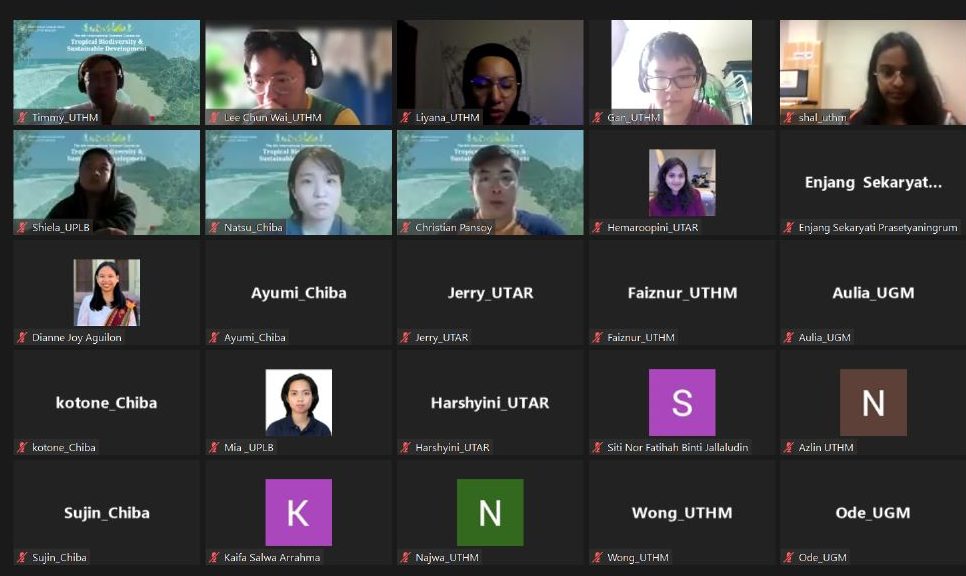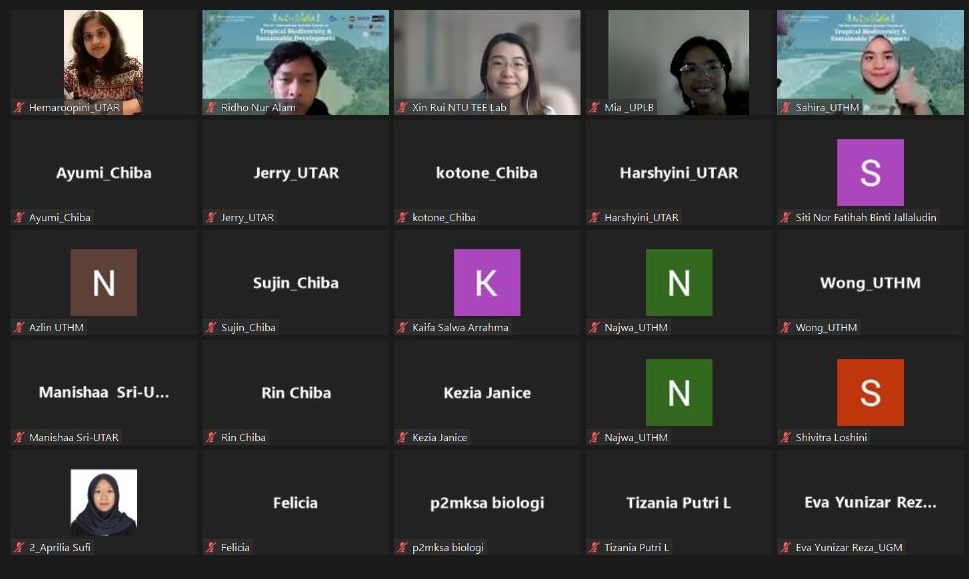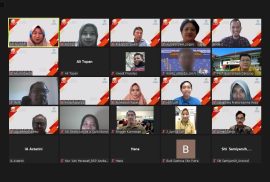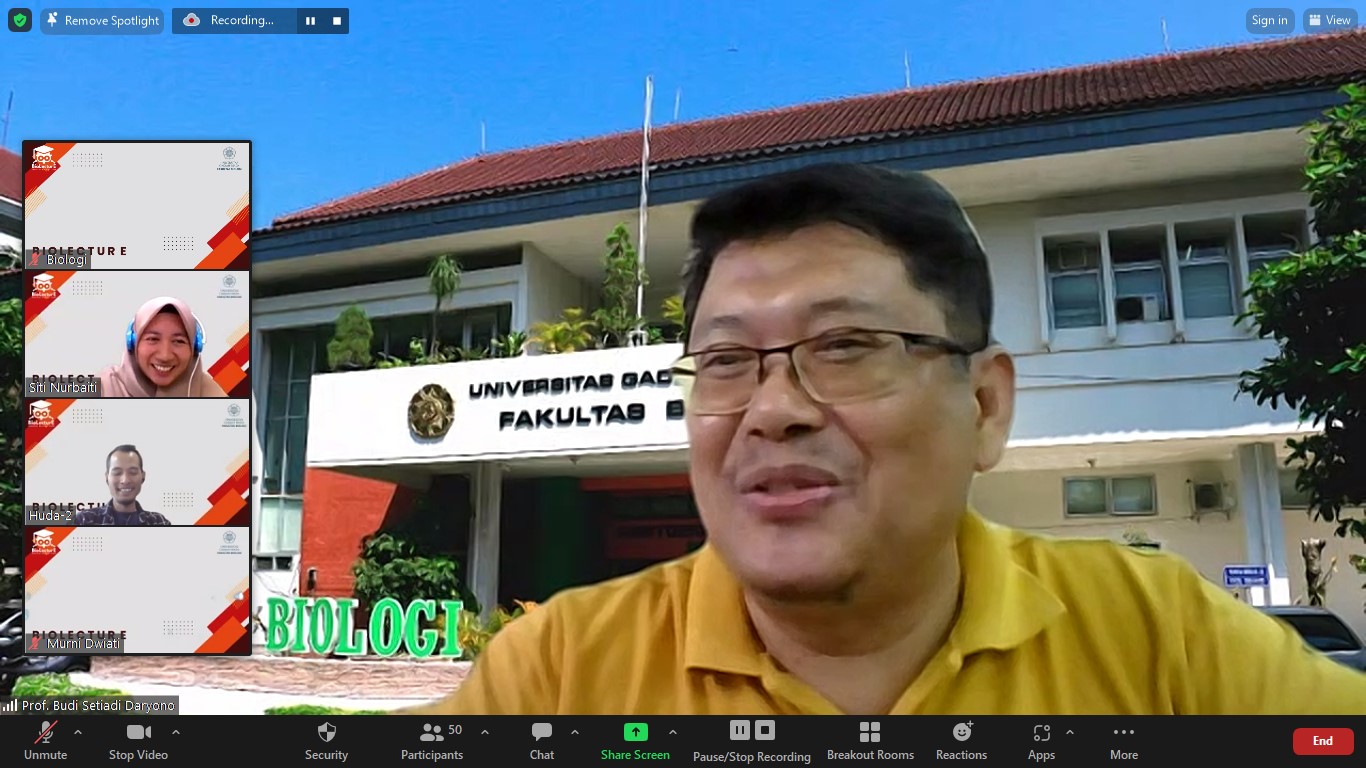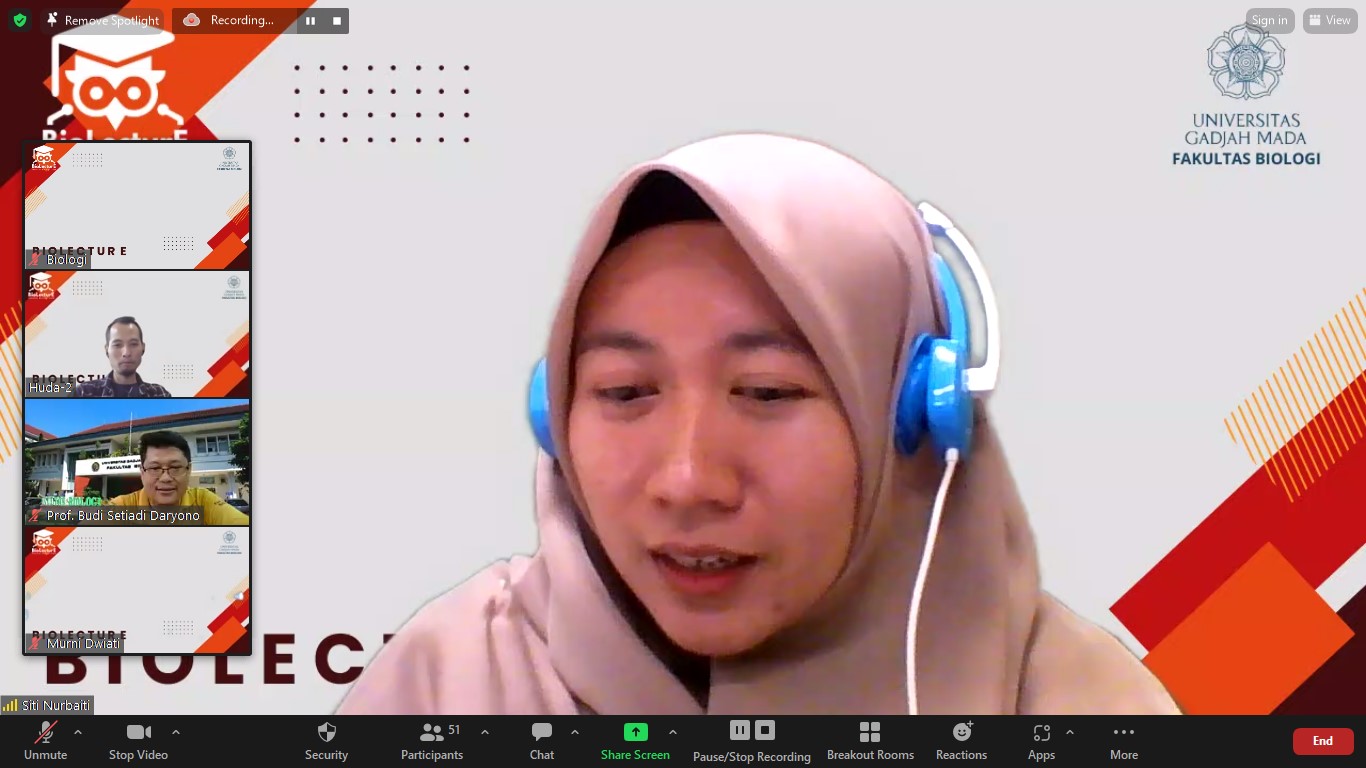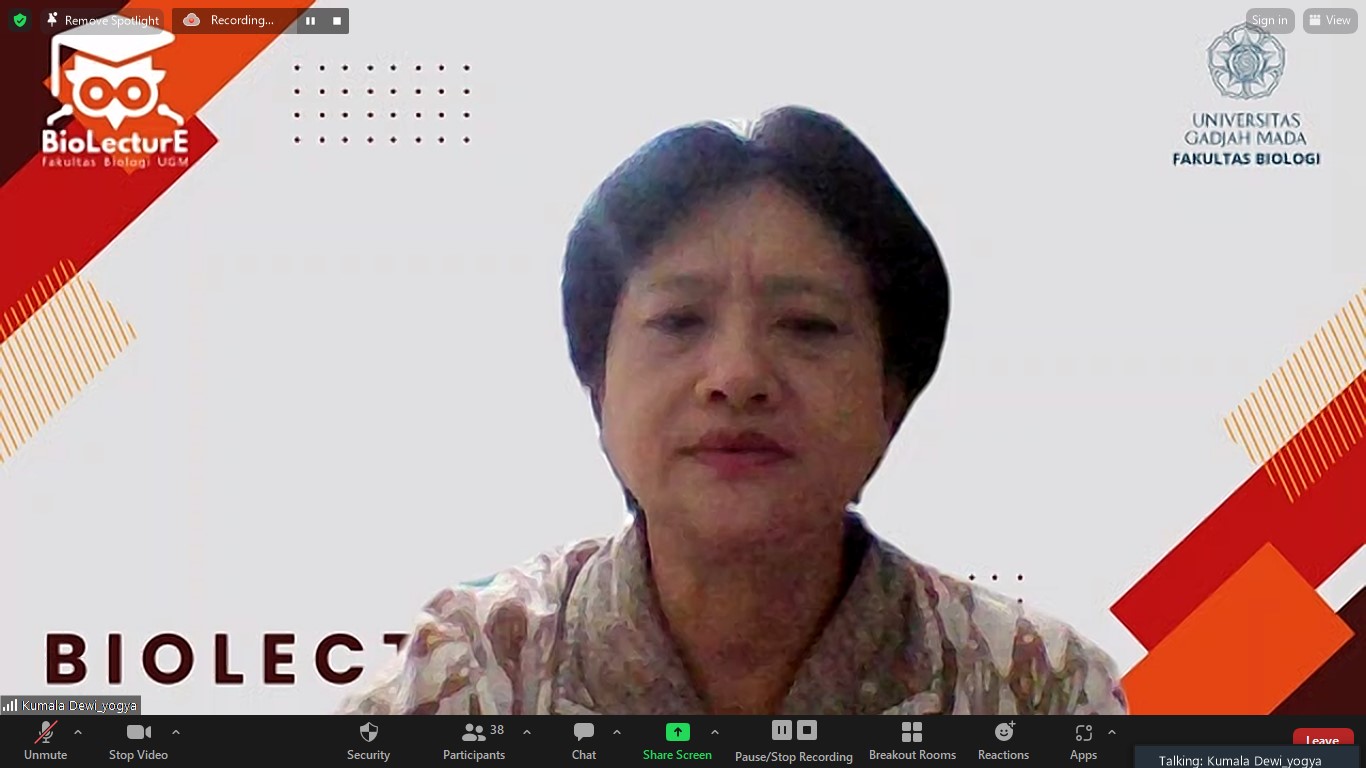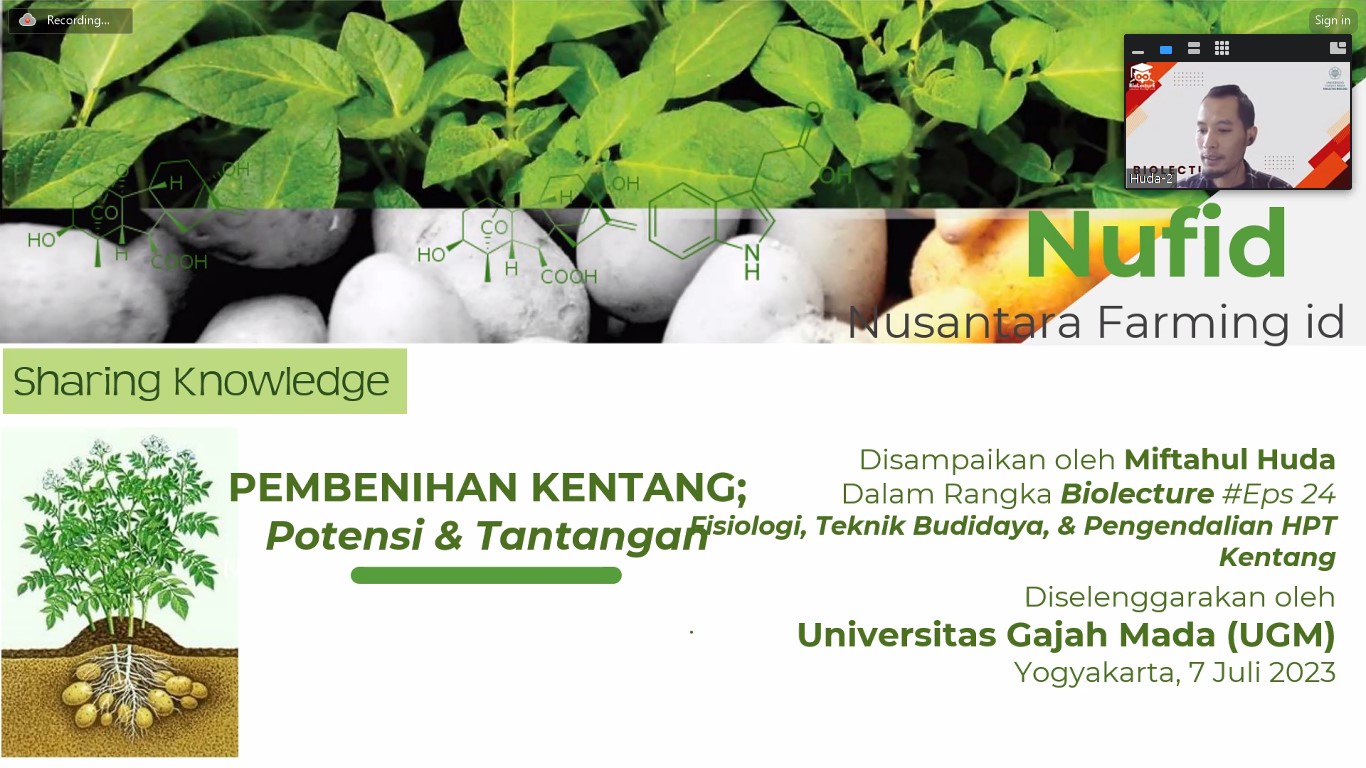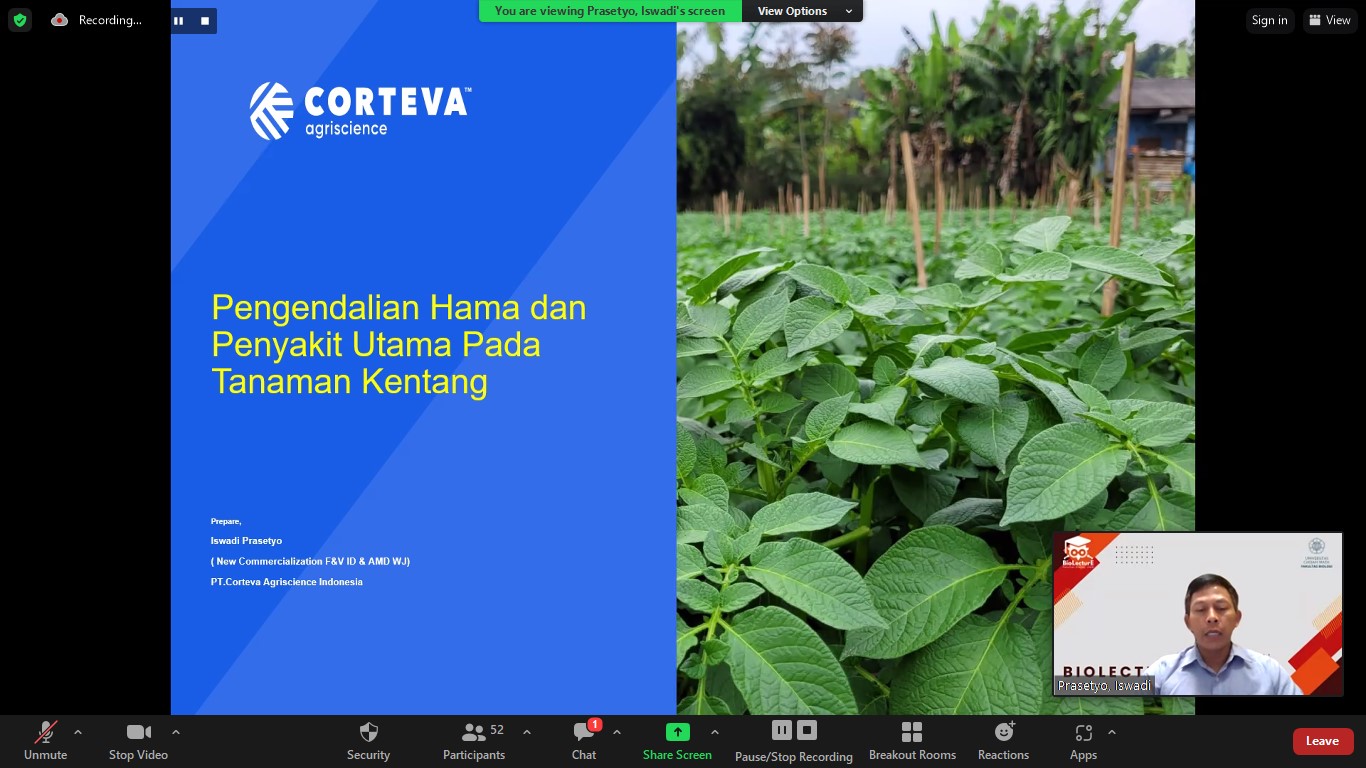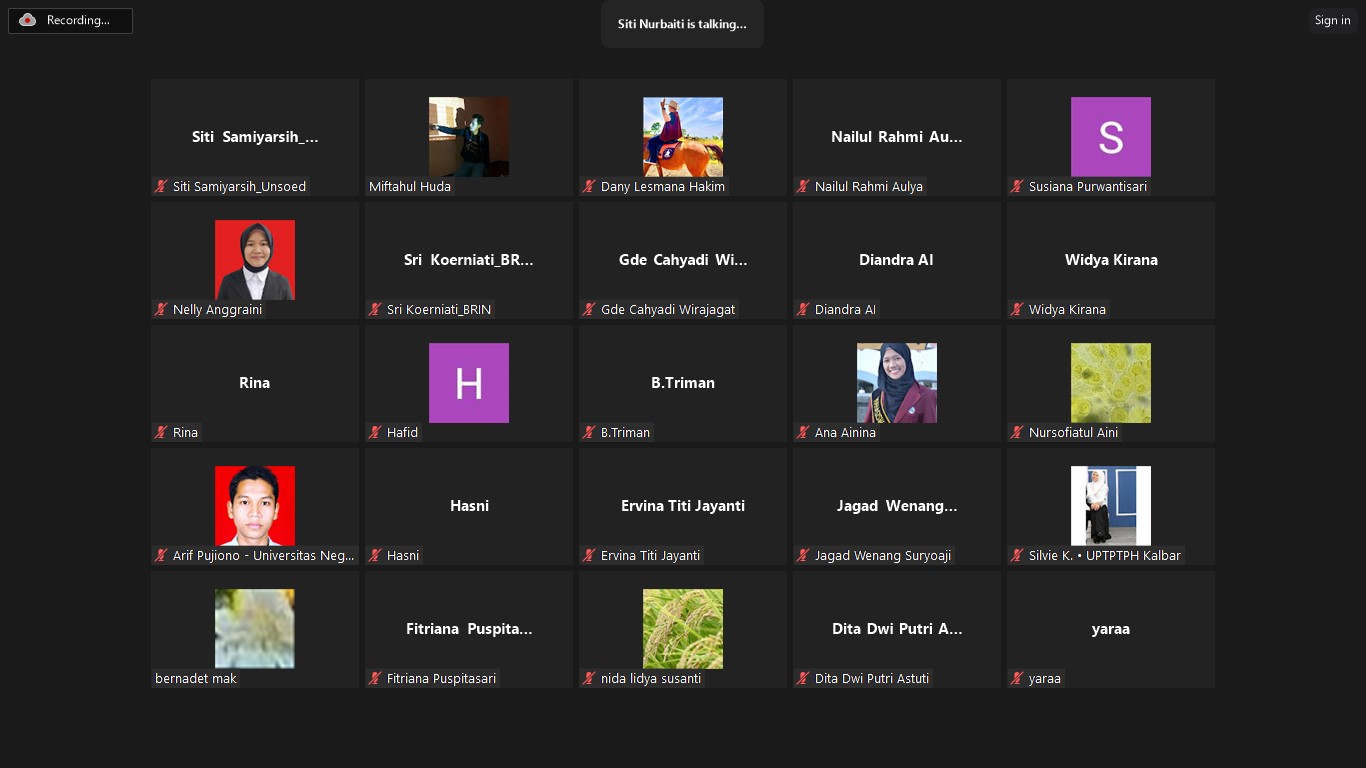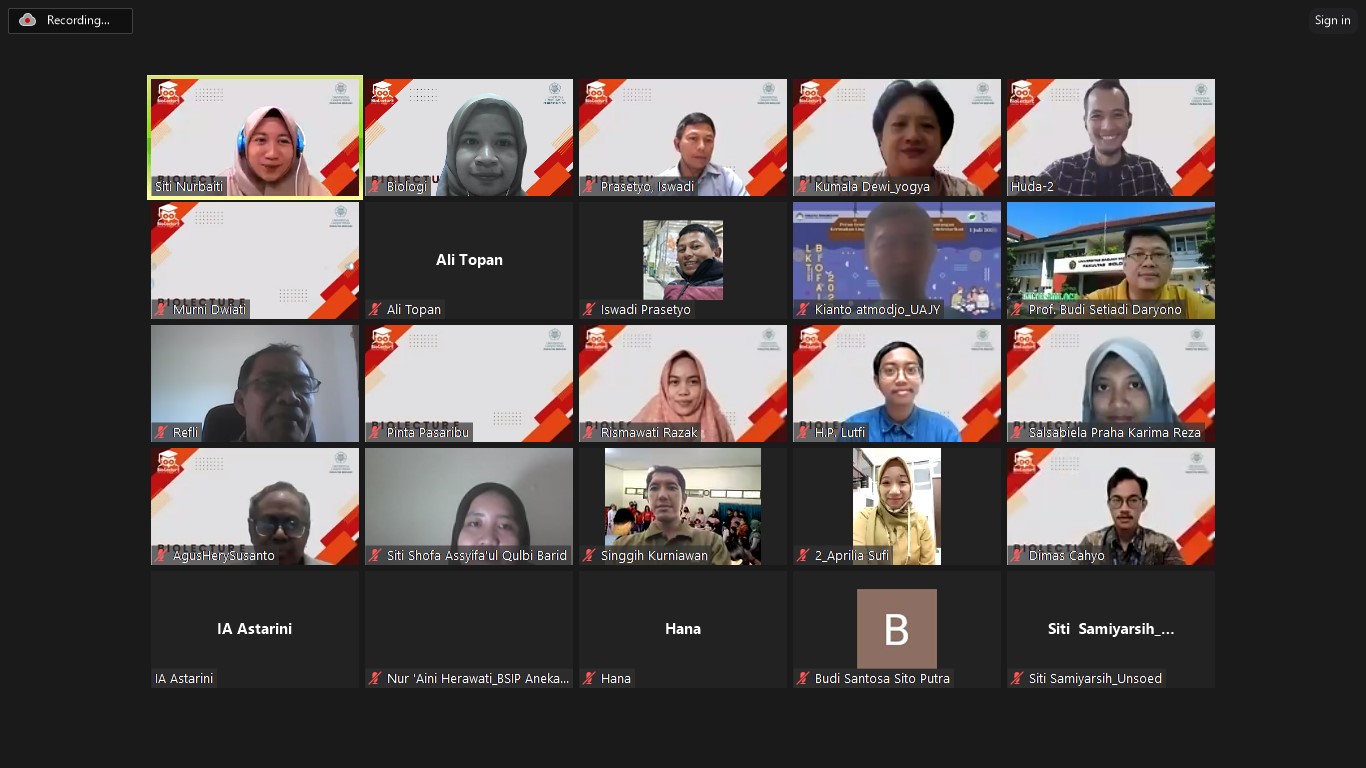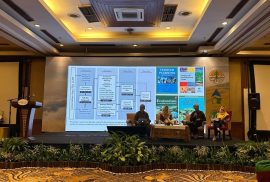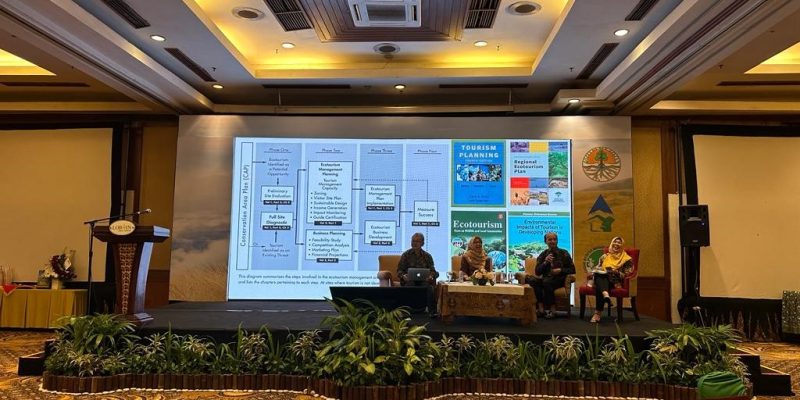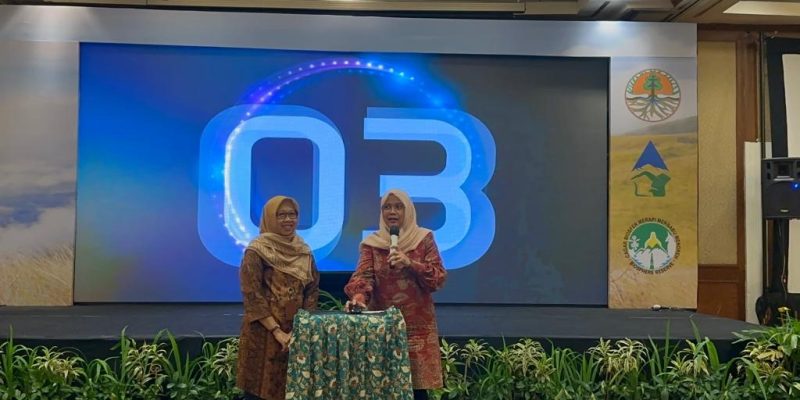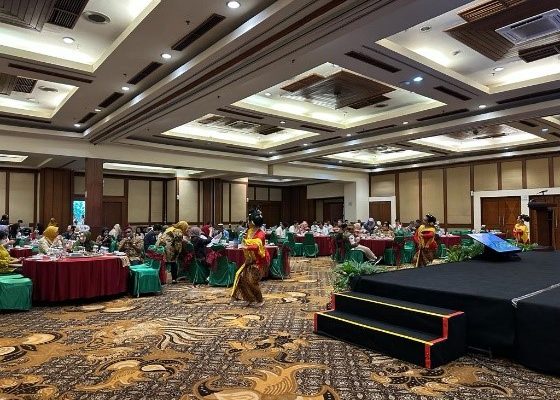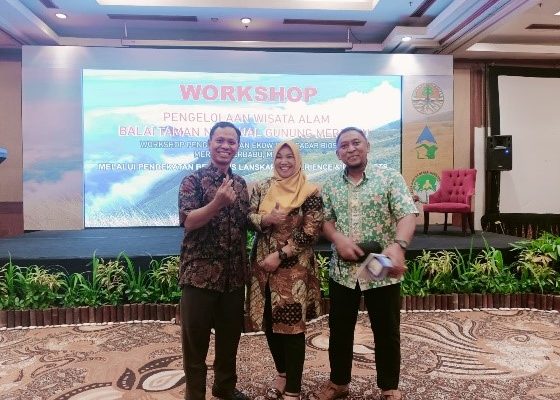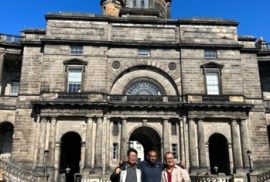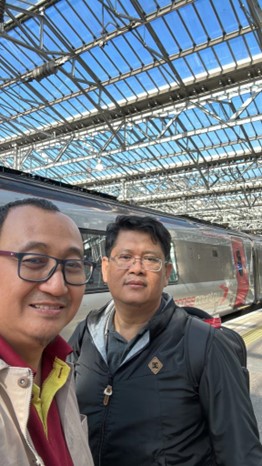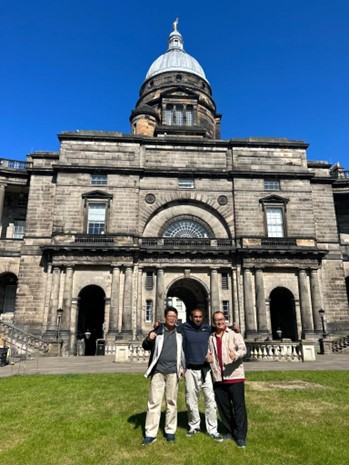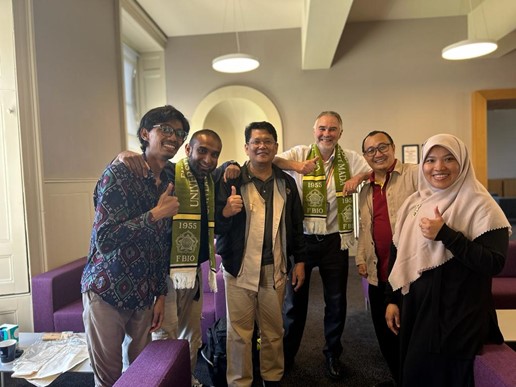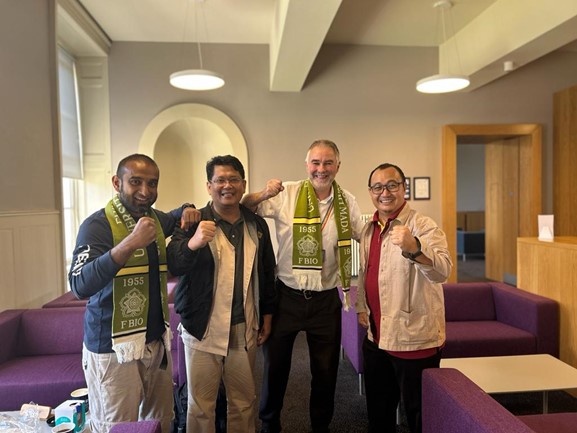Yogyakarta, July 24, 2023 – Delegates from the Faculty of Science, Kasetsart University, Bangkok, Thailand, conducted a visit to the Faculty of Biology, Gadjah Mada University (UGM) to strengthen cooperation and collaboration in the fields of academics and research. The delegation from Kasetsart University, consisting of Professor Kornsorn Srikulnath, Ph.D., and Thitipong Panthum, M.Sc., Ph.D. (cand.), was warmly welcomed by officials and lecturers of UGM’s Faculty of Biology at the KPTU meeting room.
The welcoming remarks for the visit were delivered at the KPTU meeting room, Faculty of Biology, UGM, by Prof. Dr. Budi Setiadi Daryono, M.Agr.Sc., the Dean of UGM’s Faculty of Biology, Dr. Bambang Retnoaji, M.Sc., the Vice Dean for Academic and Student Affairs, Dr. Eko Agus Suyono, M.App.Sc., the Vice Dean for Research, Community Service, Collaboration, and Alumni, Dr. Endah Retnaningrum, M.Eng, the Head of the Doctoral Program, Nur Indah Septriani, S.Si., M.Sc., Ph.D., and Dr. Abdul Rahman Siregar, M.Biotech., from the Office of International Affairs, as well as Sari Darmasiwi, S.Si., M.Biotech., Ph.D., a faculty member of UGM’s Faculty of Biology, who is also an alumnus of Kasetsart University.
The visit commenced with a comprehensive presentation of UGM’s Faculty of Biology’s profile delivered by Dr. Eko Agus Suyono, M.App.Sc., the Vice Dean for Research, Community Service, Cooperation, and Alumni Affairs of UGM’s Faculty of Biology.The purpose of this visit was to strengthen cooperation between the two institutions in the areas of academics and research, as well as to facilitate the exchange of knowledge among biologists from both countries. As part of their agenda, Professor Kornsorn Srikulnath and Thitipong Panthum are planning to hold several joint lecture programs on fascinating topics, including animal genomics and biosource for food security and biodiversity, enhancing biodiversity and genetic diversity through the chicken bioresource, wildlife genomics for conservation management, utilizing catfish as a bioresource for food production and breeding programs, and exploring the potential for research collaboration through laboratory visits.
Professor Kornsorn Srikulnath, a renowned expert in animal genetics, expressed his delight at the warm reception from UGM’s Faculty of Biology and conveyed his hope to expand cooperation with this prestigious institution. He also expressed his intention to establish closer partnerships in biodiversity research, which can bring significant benefits to both nations.
Dr. Budi Setiadi Daryono, M.Agr.Sc., Dean of UGM’s Faculty of Biology, expressed high appreciation for the visit and reaffirmed the faculty’s commitment to actively contribute to biodiversity conservation and the advancement of scientific knowledge in enhancing global environmental resilience.
Professor Kornsorn Srikulnath and Thitipong Panthum are scheduled to stay in Yogyakarta until August 5, 2023, allowing ample time for collaboration with academics and researchers at UGM’s Faculty of Biology. It is hoped that this visit will yield substantial benefits for both parties and contribute to further solidifying UGM’s Faculty of Biology as a leading center for research and education in biology at the international level.

